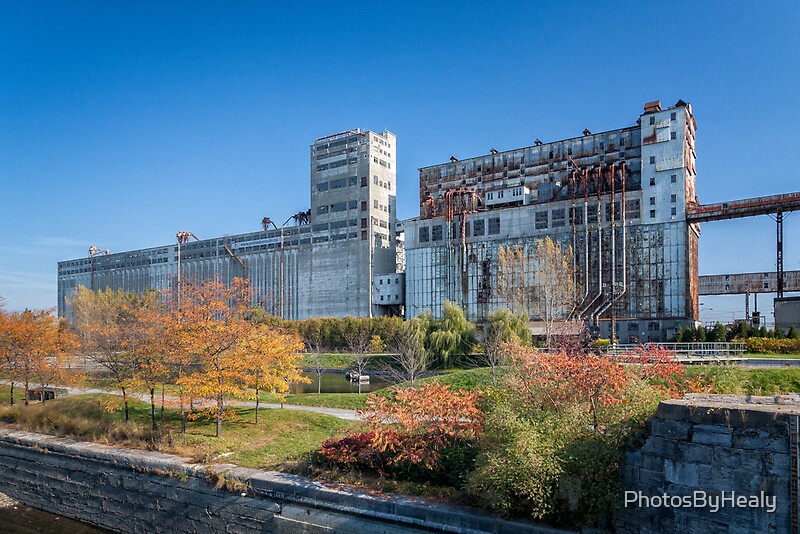
Construction on what was eventually to become the oldest part of the complex known as Silo No. 5 began in 1903. The John S. Metcalf Co, renowned specialists in the construction of steel grain elevators, held the patents for the design of the elevator and is believed to have also obtained the construction contract. The Harbour Commission, while delegating the responsibility for overseeing the construction of Elevator “B” to the Grand Trunk, nevertheless kept a close eye on its construction. The elevator was built lengthwise along Windmill Point between the Lachine Canal and Windmill Basin. The orientation was dictated by the narrowness of Windmill Point as well as by the necessity of aligning the elevator with the tracks of the Grand Trunk which brought the railcars carrying grain directly into the elevator for unloading.
Elevator “B”, a prototype for John S. Metcalf, was representative of the short period when steel was considered to be the material of choice for the construction of grain elevators and was considered to be an engineering marvel in its time. It is an imposing building measuring 26 metres wide, 73.5 metres long and 55 metres high constructed on concrete foundations and made entirely of non-combustible materials.
Elevator “B” was designed as an integrated system for grain handling, with each level serving as a component or stage in the mechanized system for moving, sorting, weighing, and storing grain. The ground floor, of substantial height, is in brick, later covered by concrete, and was designed for the reception and shipping of grain. The only decorative elements in the building are the small arches over the two rows of openings on the ground floor.
When it was built in 1906, Elevator “B” was equipped with 10 elevator legs using 20″ × 7″ x "7 buckets. Five of these legs were used for receiving grain and 5 for shipping, giving the elevator a total capacity of moving 100,000 bushels per hour. Six continuous belt conveyors located in the basement transported the arriving grain across the building and unloaded it in elevators which raised it to the top of the structure. The ground floor was equipped with 5 pair of steam shovels for unloading the rail cars, 2 cleaning machines, and a complete sweeper system. On the west side of the building, a conveyor brought the grain from the marine legs and unloaded it into the 5 receiving elevators. An extensive belt conveyor system was also erected to deliver grain from the elevator to vessels lying in the Windmill Basin through a system of 19 marine loading spouts. Two loading spouts were also provided to load barges in the Lachine Canal.
Little has changed in the physical aspect of Elevator “B” since its construction and the mechanical equipment, including the rail tracks, has remained in place and is in good condition. In 1922, a rail car tipper, nicknamed the Metcalf car dumper, was installed to increase rail car unloading efficiency. The original Elevator “B” remained the nerve centre of the complex after the construction of its annexes in 1914 and 1924. At the time of the construction of Elevator “B-1” in 1957-1959, it was renovated to increase production and security. (Source: Point-du-Moulin)
Click on the image above to purchase it from my RedBubble site on a number of products ranging from Wall Art to Phone Cases and Home decor and more.




No comments:
Post a Comment